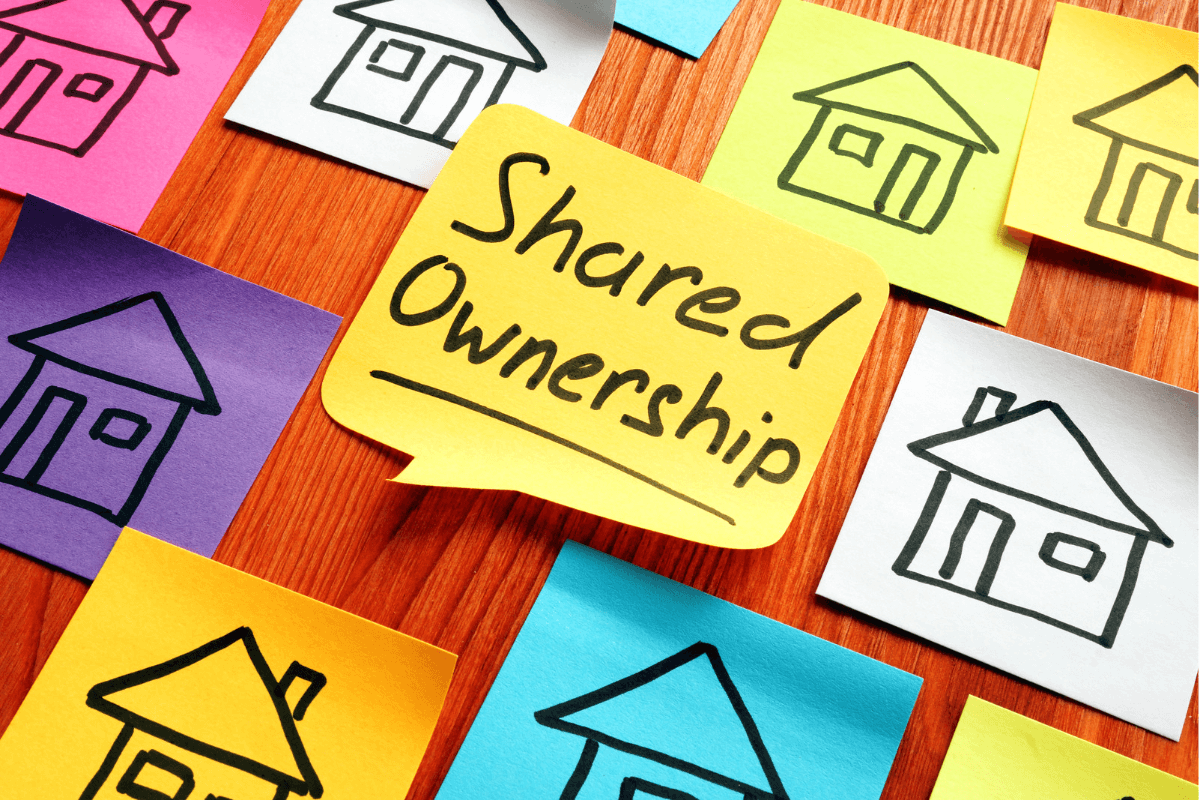Exploring Shared Ownership Mortgages in the UK: What You Need to Know
Are you looking to buy a home in the UK but don’t have enough money for a full mortgage? A shared ownership mortgage might be the perfect option for you. In this blog post, we will be exploring shared ownership mortgages in the UK. We’ll discuss what they are, the benefits they offer, and how to qualify for one. By the end of this post, you will have all the information you need to make an informed decision about whether or not a shared ownership mortgage is right for you.
What is a shared ownership mortgage?
A shared ownership mortgage is a type of homeownership scheme in the UK that allows people to buy a portion of a property, usually between 25% to 75%, while renting the remaining portion from a housing association or developer. This is a great option for first-time buyers or those who cannot afford to buy a property outright, but still want to own a home.
The shared ownership scheme is a government initiative that aims to help people onto the property ladder by offering an affordable way to buy a home. The scheme has been in place since the 1970s, but it has become more popular in recent years due to rising house prices and the difficulty of saving for a deposit.
Under the shared ownership scheme, buyers take out a mortgage to buy a portion of the property and pay rent to the housing association or developer on the remaining portion. This rent is usually charged at a lower rate than the market rent, making it more affordable. The buyer can choose to purchase additional shares in the property over time, known as staircasing, until they eventually own the property outright.
Shared ownership properties can be found all over the UK and can range from one-bedroom flats to four-bedroom houses. The properties are usually new builds or refurbished homes that are being sold by housing associations or developers.
Who can qualify for a shared ownership mortgage?
Shared ownership mortgages are designed to make homeownership more accessible to those who may not be able to afford to buy a property outright. However, there are certain eligibility requirements that need to be met in order to qualify for a shared ownership mortgage in the UK.
Firstly, you need to be a first-time buyer or someone who used to own a home but cannot afford to buy one now. Additionally, you need to have a household income of less than £80,000 in London or £60,000 in other parts of the UK.
The property you’re interested in purchasing must also be eligible for shared ownership. This usually means that it is a newly-built property or one that is being sold by a housing association or local authority. The property must also be your primary residence, and you must not own any other property at the time of purchase.
Finally, it’s important to note that some mortgage lenders may have additional eligibility requirements that you need to meet in order to qualify for a shared ownership mortgage. It’s important to do your research and check with your lender to see if you meet all their eligibility criteria.
How does shared ownership work in practice?
Shared ownership properties are typically sold on a leasehold basis, with the borrower having a lease of 99 years. This means that the borrower will have to pay annual ground rent to the freeholder, which is usually a nominal amount.
In practice, shared ownership mortgages work by the borrower finding a property that is available on a shared ownership basis. They then apply for a mortgage for their share of the property and pay a deposit as usual. They will also need to pass an affordability assessment to ensure that they can afford the mortgage payments and the rent on the remaining share.
Once the mortgage is approved, the borrower will own their share of the property and pay the rent on the remaining share. They will also be responsible for maintenance and repair costs on their share of the property.
What are the benefits and drawbacks of shared ownership mortgages?
As with any financial product, there are pros and cons to consider when it comes to shared ownership mortgages. Let’s take a closer look at what they are.
1. Smaller deposit – With a shared ownership mortgage, you can buy a share in a property rather than the whole thing. This means you’ll only need to put down a deposit on the percentage you’re buying, which can be much more affordable.
2. Lower mortgage repayments – As you’re only borrowing money for the share of the property you’re buying, your mortgage repayments will be lower than if you were buying the whole property outright.
3. Option to increase ownership – Most shared ownership schemes allow you to increase your ownership of the property over time, so you can buy more shares when you’re able to.
4. Security of owning your own home – Even though you might only own a percentage of the property, you still have the security of owning your own home and the freedom to make changes and improvements as you see fit.
1. Limited choice of properties – Shared ownership schemes are only available on certain properties, which can limit your options.
2. Maintenance costs – You’ll be responsible for maintaining the property, even if you only own a percentage of it. This can include repairs and upkeep, which can be costly.
3. Possible restrictions on selling – Depending on the terms of your shared ownership agreement, you may not be able to sell your share of the property to just anyone. This can limit your options if you want to move on.
4. Shared ownership may not be for everyone – Some people may prefer to save up for a larger deposit and buy a property outright, rather than opting for shared ownership.
How to apply for a shared ownership mortgage?
If you’re considering a shared ownership mortgage, the first step is to find a property that is available for shared ownership. This can be done by searching online or through a housing association.
Once you have found a property, you will need to apply for a shared ownership mortgage. This is a bit different from a regular mortgage application process, so it’s important to know what to expect.
The first thing you will need to do is find a lender who offers shared ownership mortgages. This can be done by searching online or speaking with a mortgage advisor. It’s important to compare rates and terms from different lenders to ensure you get the best deal.
Next, you will need to complete an application form for the shared ownership mortgage. This will require you to provide information about your income, employment, and any other relevant financial information. You may also be required to provide documentation to support your application, such as payslips or bank statements.
Once your application has been processed and approved, you will need to provide a deposit for the property. This is usually around 5-10% of the property value, but can vary depending on the lender.
Finally, you will need to sign a shared ownership agreement with the housing association. This agreement will outline your rights and responsibilities as a shared owner, including details about rent, repairs, and maintenance.
Applying for a shared ownership mortgage can be a complex process, but it’s important to take your time and understand the terms and conditions before signing any agreements. It’s also important to seek advice from a qualified professional, such as a mortgage advisor or solicitor, to ensure you fully understand your rights and responsibilities as a shared owner.
Common misconceptions about shared ownership mortgages
As with any financial product, shared ownership mortgages have garnered a fair share of misconceptions and misunderstandings over the years. Here are some common ones that we’d like to address:
Misconception #1: You don’t actually own your home with a shared ownership mortgage.
This is false. When you take out a shared ownership mortgage, you own a percentage of your home and have the option to buy more shares in the future. You’ll still need to pay rent on the remaining percentage that you don’t own, but this will likely be lower than if you were renting the whole property.
Misconception #2: Shared ownership is only for low-income earners.
While shared ownership is designed to help those who may struggle to afford a home on their own, it’s not exclusively for low-income earners. In fact, there are a variety of income thresholds that can qualify you for shared ownership, depending on the location and price of the property you’re interested in.
Misconception #3: You can’t sell your shared ownership home.
You absolutely can sell your shared ownership home, but there are some rules and restrictions around the process. You’ll need to offer your home to the housing association that owns the remaining percentage of the property first, and they’ll have the option to buy it from you before you can market it to others.
Misconception #4: Shared ownership properties are all in undesirable locations.
While it’s true that some shared ownership properties may be located in areas that are considered less desirable, this isn’t always the case. Many shared ownership properties are located in new developments or revitalised urban areas that are experiencing growth and investment.
Misconception #5: You’ll never be able to own your home outright with a shared ownership mortgage.
While it’s true that you may never be able to own 100% of your shared ownership home, you can certainly aim to increase your percentage of ownership over time. Many shared ownership schemes allow you to purchase additional shares of your property, which can help you build equity and eventually own a larger portion of your home.
By understanding the reality of shared ownership mortgages and debunking these misconceptions, you’ll be better equipped to decide if this type of home ownership is right for you.





